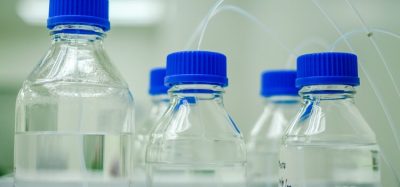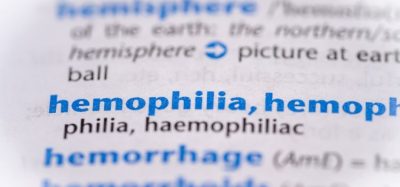Could cyber-physical watermarks be the key to pill-level traceability?
Posted: 3 March 2022 | Hannah Balfour (European Pharmaceutical Review) | No comments yet
New anti-counterfeit technology, called a cyber-physical watermark, leverages edible fluorescent silk to identify medications.
![Purdue University biomedical engineers have developed new cyber-physical watermarks that allow people to check medication authenticity with a smartphone [Credit: Purdue University photo/John Underwood].](https://www.europeanpharmaceuticalreview.com/wp-content/uploads/cyber-physical-watermarks-2-750x500.jpg)
![Purdue University biomedical engineers have developed new cyber-physical watermarks that allow people to check medication authenticity with a smartphone [Credit: Purdue University photo/John Underwood].](https://www.europeanpharmaceuticalreview.com/wp-content/uploads/cyber-physical-watermarks-2-750x500.jpg)
Purdue University biomedical engineers have developed new cyber-physical watermarks that allow people to check medication authenticity with a smartphone [Credit: Purdue University photo/John Underwood].
The US Food and Drug Administration (FDA) has mandated that by 2023 medications have unit-level traceability through the Drug Supply Chain Security Act. But how can this be achieved? In a recent paper, researchers from Purdue University, US, revealed a technology that could meet this requirement.
Counterfeit medications and pharmaceutical products are just a click away from being purchased from online pharmacies via smartphone. However, the newly developed anti-counterfeiting technology could turn smartphones into lifesavers by allowing patients to simply take a picture of a cyber-physical watermark to confirm if a medication is real or not.
Young Kim, associate head for research and an associate professor in Purdue’s Weldon School of Biomedical Engineering, says the continued rise of counterfeit medications, pharmaceutical products and medical supplies can be attributed to the increase of online pharmacies, many of which are unregulated.
To counteract the issue, the FDA is requiring medications have unit-level traceability by 2023. But, while pharmaceutical companies currently have the ability to track boxes or sheets of medications, the jump to adding traceability directly to pills could require adding numerous manufacturing and data management steps, according to Kim.
Kim’s team proposes using small cyber-physical watermarks to trace medications and confirm whether they are real or fake, as well as allowing patients to confirm dose and frequency, and access additional information on the medicine.
![People can use a smartphone app to activate a new cyberphysical watermark to detect whether the medication they are taking is real or fake. Purdue biomedical engineers have developed the cyberphysical watermark as a way to reduce fake medications [Credit: Purdue University photo/John Underwood].](https://www.europeanpharmaceuticalreview.com/wp-content/uploads/cyber-physical-watermarks-375x250.png)
![People can use a smartphone app to activate a new cyberphysical watermark to detect whether the medication they are taking is real or fake. Purdue biomedical engineers have developed the cyberphysical watermark as a way to reduce fake medications [Credit: Purdue University photo/John Underwood].](https://www.europeanpharmaceuticalreview.com/wp-content/uploads/cyber-physical-watermarks-375x250.png)
People can use a smartphone app to activate a new cyberphysical watermark to detect whether the medication they are taking is real or fake. Purdue biomedical engineers have developed the cyberphysical watermark as a way to reduce fake medications [Credit: Purdue University photo/John Underwood].
“A paper watermark is commonly used on currency and a passport to discourage counterfeiting, and we are affixing a watermark on an individual medicine that is readable by a smartphone camera to extract a hidden digital key,” Kim said. “Purdue has an excellent track record of watermarking and inkjet printing research. We are proud that we have extended such national security research into pharmaceuticals as counterfeit medicines are a national security problem.”
The cyber-physical watermark is printed on specialised edible fluorescent silk with FDA-approved food dye using an inkjet printer. According to the researchers, using fluorescent silk is not only beneficial because it makes it difficult for counterfeiters to duplicate the watermark, but also because engineers can change the biopolymer’s shape, structure and flexibility.
The engineers also addressed how to use the technology with different smartphone models, photo quality and light.
“A person can take a photo under different light conditions and will have different images. It is the same issue when patients take photos of our watermark in their phone,” Kim explained. “The reference colours on the watermark’s periphery allow us to know the true colour value of the watermarked image as each smartphone has different spectral sensitivity.”
Placed on pills using a simple sugar glue, the smallest size of watermark the team could produce is 5mm by 5mm. While the team has had success with solid pills, it is working also on developing technology for liquids.
Kim said that the cyber-physical watermark technology could be used first on name-brand medications and restricted narcotics before being rolled out on over-the-counter medications and generics.
The technology was published in Advanced Functional Materials.
Related topics
Drug Counterfeiting, Drug Safety, Labelling, Regulation & Legislation, Supply Chain, Technology









